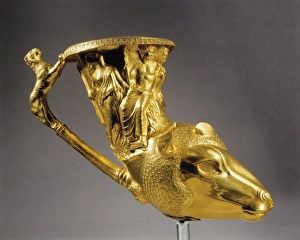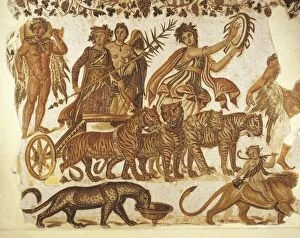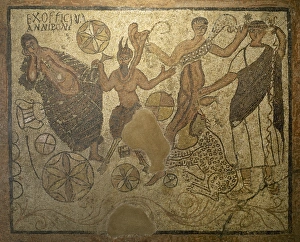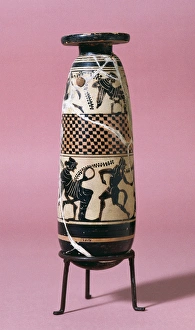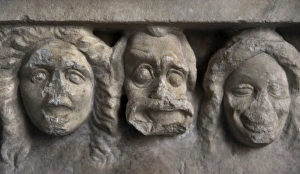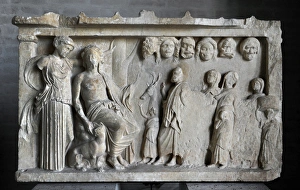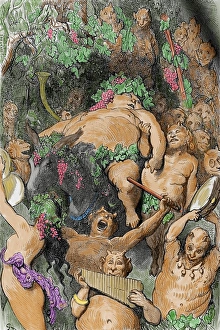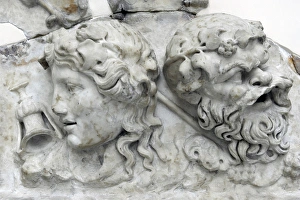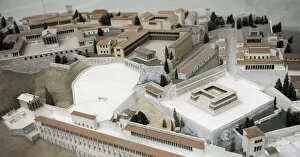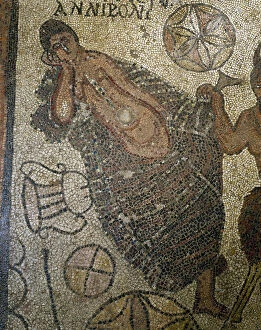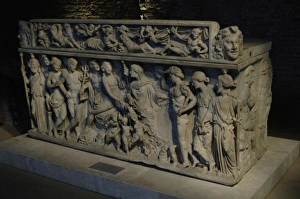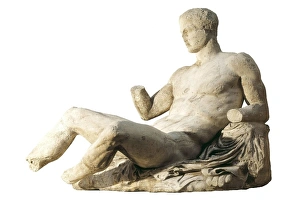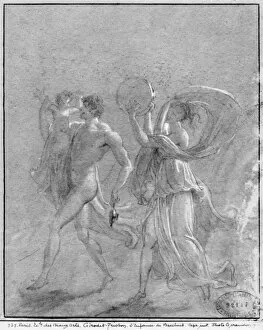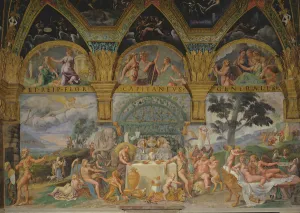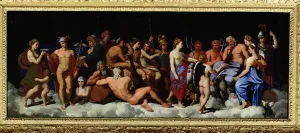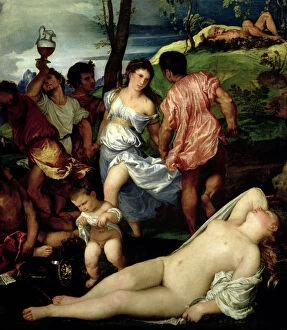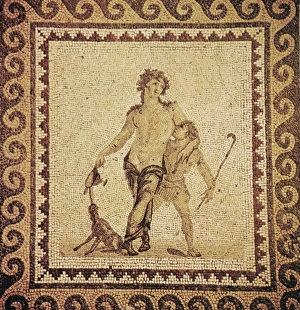Dionysus Collection (page 17)
"Dionysus: The Divine Revelry of Greek Mythology" In the pantheon of Greek gods in the Olymp, Dionysus holds a special place as the god of wine, fertility
All Professionally Made to Order for Quick Shipping
"Dionysus: The Divine Revelry of Greek Mythology" In the pantheon of Greek gods in the Olymp, Dionysus holds a special place as the god of wine, fertility, and ecstatic revelry. Dating back to ancient times, his tales have been immortalized through various artistic depictions and writings. One such representation is seen in an exquisite Byzantine icon titled "SAINTS SERGIUS AND BACCHUS. " This masterpiece showcases Dionysus, also known as Bacchus, seated on his majestic throne alongside Saint Sergius and Saint Bacchus. It beautifully captures the fusion between Greek mythology and Christian beliefs during that era. Another captivating artwork portraying Dionysus is "Dionysus and the Maenads" from 1901. This painting vividly portrays him surrounded by his wild female followers called Maenads, who were known for their frenzied dances and rituals dedicated to their beloved deity. The influence extends beyond paintings; they can be found in sculptures like "Hermes and the Infant Dionysus, " where Hermes protects baby Dionysus from danger. Created by Praxiteles around 370-330 BC, this sculpture exemplifies both gracefulness and tenderness. Bacchic festivities often revolved around wine consumption due to its association with Dionysian worship. A fascinating depiction of this connection can be observed in Annibale Carracci's painting titled "Silenus gathering Grapes. " Silenus was a wise old satyr who served as a companion to Dionysus while symbolizing intoxication's transformative power. The cult had elaborate initiation rites that aimed to connect mortals with divine ecstasy. One such ritual is depicted in a mesmerizing fresco from Villa Dei Mysteri showcasing initiates participating in mysterious ceremonies under the watchful eye of their god.

